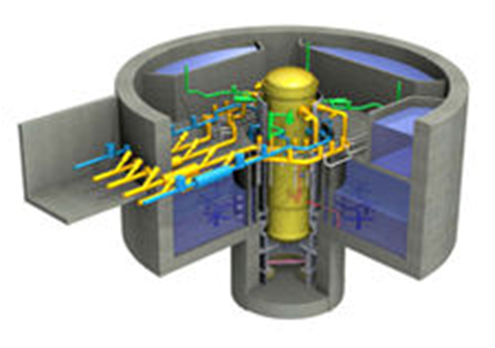General Electric Hitachi Nuclear Energy (GEH) is a global alliance between General Electric in the United States and Hitachi in Japan. The company is a global provider of nuclear reactors and nuclear industry services. GEH is working on several different designs for advanced nuclear reactors.
GEH is in the process of having the design of its “Economically Simplified Boiling Water Reactor” (ESBWR) certified by the United States Nuclear Regulatory Commission. The NRC is also reviewing applications for construction and operation of ESBWR at Dominion’s North Anna power plant and Detroit Edison’s Fermi sites.
Final approval of the design and applications has been held up by a whistleblower’s lawsuit from a former employee of GEH, under the False Claims Act, that alleges that “GEH concealed knownAZAZAZAZAZAZ flaws in the analysis of steam dryers and had made false representations that it had analyzed the components in accordance with applicable standards and verified the accuracy of its modelling.” The whistleblower is entitled to part of any money recovered by the U.S. Department of Justice from the lawsuit.
Steam dryers are used to remove excess moisture from the steam created by the nuclear reactor before it is delivered to the turbines used to generated electricity. They are “non-safety critical components.” GEH issued a statement that their steam dryers were in use in reactors around the globe and that they had always worked properly and caused no problems.
The certification of the design has been held up for two years by the lawsuit. The design of the ESBWR had been given final approval in March of 2011 after a final safety evaluation. The NRC said that it had concluded that the ESBWR design was safe and technically acceptable after a six year review process. However, the lawsuit over the steam dryers interrupted the final stages of the review process. The NRC proceeded with a study of the steam dryer modelling methodology and further analyzes and reviews. The normal certification process will be resumed after a final safety evaluation report and review of the steam dryer problems is finished.
GEH has issued a statement explaining why it agreed to a 2.7 million dollar fine to resolve the lawsuit. "Even though GEH denies the allegations, we believe that resolution of this matter supports our continuing efforts to maintain and enhance a positive working relationship with the US government, and more specifically the Nuclear Regulatory Commission". The U.S. Department of Justice also issued a statement in which they confirmed that there were only allegations of false claims and that there had been “no determination of liability.”
It is interesting to note that Mitsubishi Heavy Industries (MHI), another nuclear contractor, is involved in a lawsuit over the closed San Onofre nuclear power plant. South California Edison (SCE), the owners of the plant allege that MHI used a faulty modelling process to OK design changes to the new turbines that SCE had ordered from them. The turbines failed in two years. MHI is counter-suing the claiming that they warned SCE that the turbine design changes could cause problems. Since it can take years for some design problems to become apparent, it is absolutely critical that modelling used in the design of nuclear reactors be good as possible.
Cutaway diagram of a GE Hitachi ESBWR:
